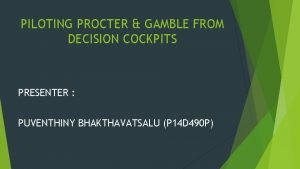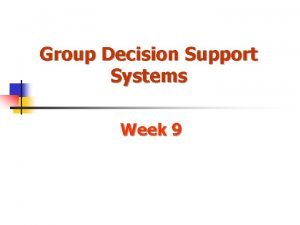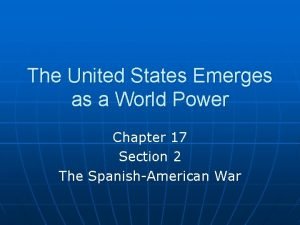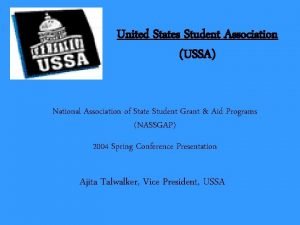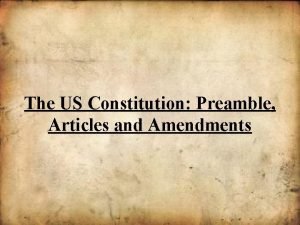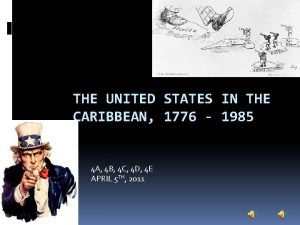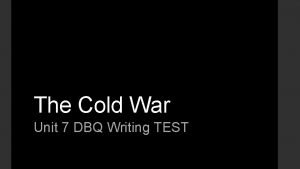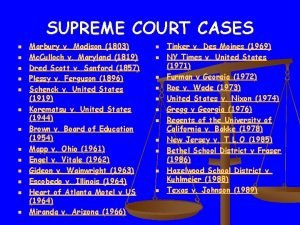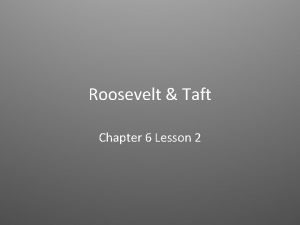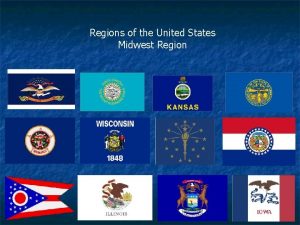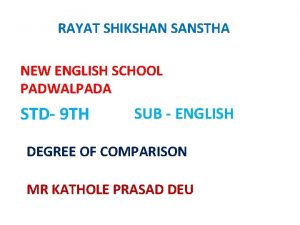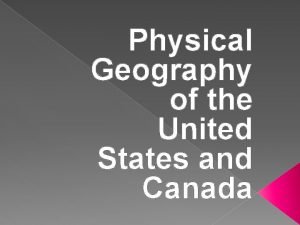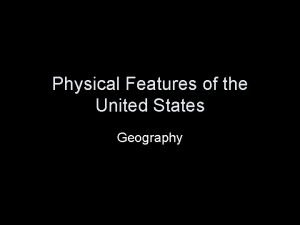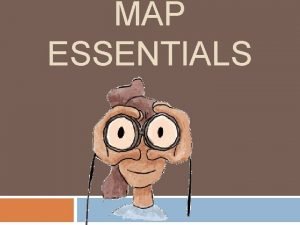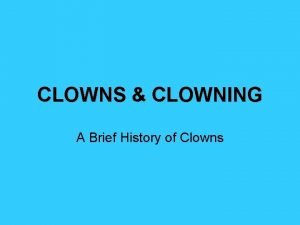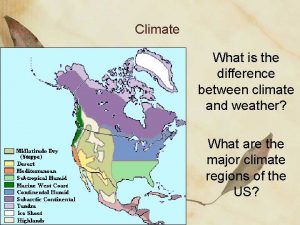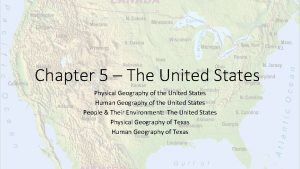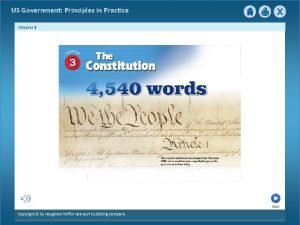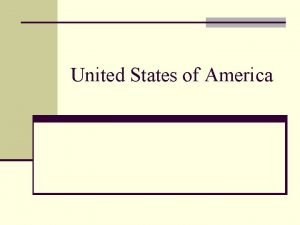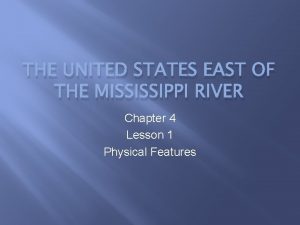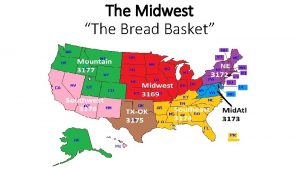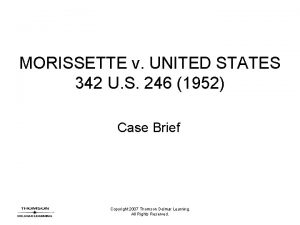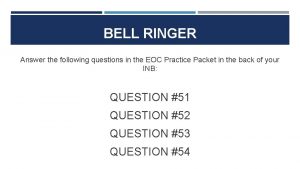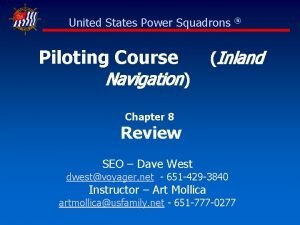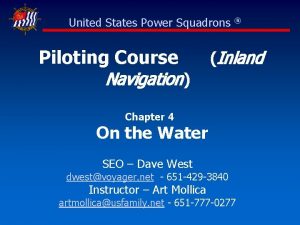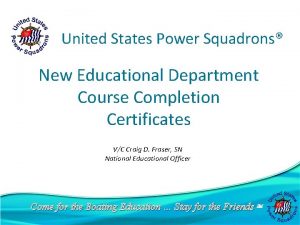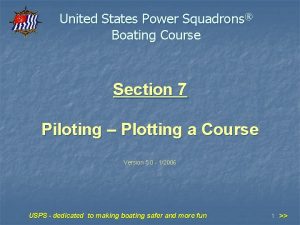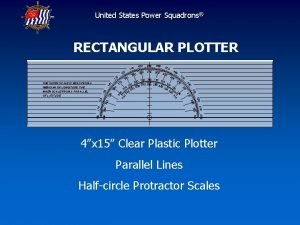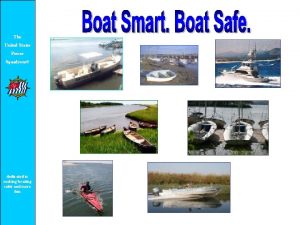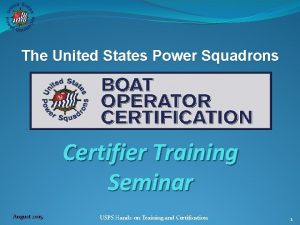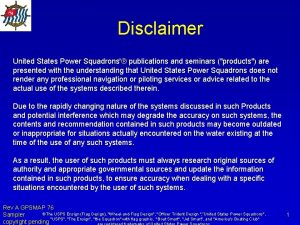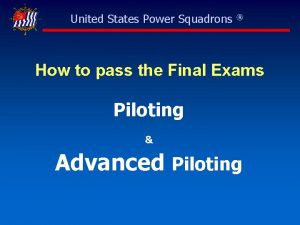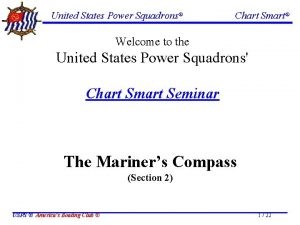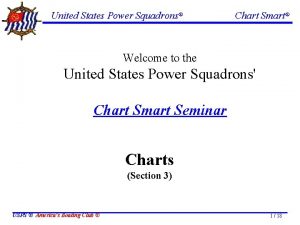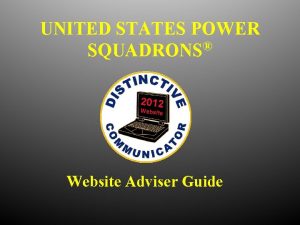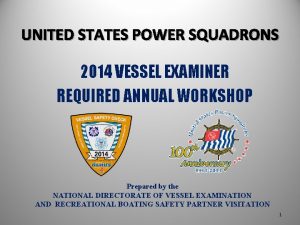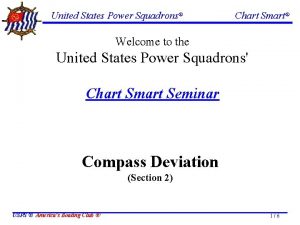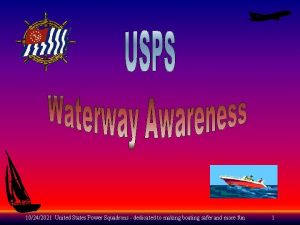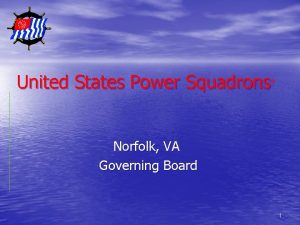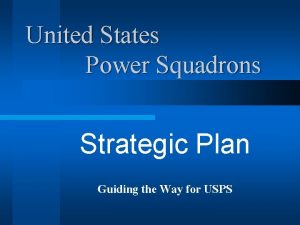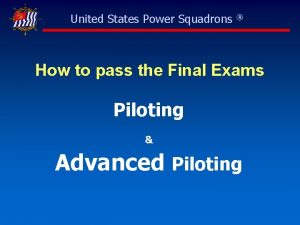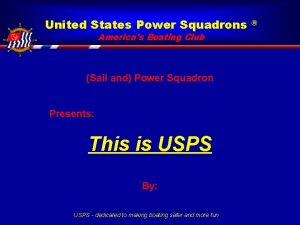United States Power Squadrons Advanced Piloting Course Coastal



















































- Slides: 51

United States Power Squadrons® Advanced Piloting Course (Coastal Navigation) Chapter 1 Considerations Educational Officer – Dave West dwest@voyager. net - 651 -429 -3840 Assistant Educational Officer – David Moberg davidmoberg@att. net – 715 -386 -8582 Instructor – Art Mollica artmollica@usfamily. net - 651 -777 -0277 1

35’ 20’ 2

35’ FOLD BOTTOM THIRD UNDERNEATH AT 20’ MARK 3

FOLD TOP THIRD UNDERNEATH AT 35’ MARK 4

THIS IS THE AREA YOU WILL DO YOUR PLOTTING 5

21. 8’ 05. 6’ 49. 8’ COMPLETE FOLD FOR STORAGE 6

21. 8’ 05. 6’ FOLD FOREWARD AT 70º 49. 8’ MARK 7

21. 8’ FOLD BACKWARD AT 71º 05. 6’ MARK 8

FOLD LEFT EDGE FOREWARD AT 71º 21. 8’ MARK 9

Course Objectives § Extended Coastal / Inland Cruising § Electronic Navigation • Chartplotters, Computers, Digital Charts • Radar • Sonar, etc. § Advanced Positioning Techniques • Accuracy, Electronic Fixes • Avoidance Techniques § Tidal Effects • Depth, Clearance • Current Effects § Adjusting for Effects of Winds and Currents 10

Precision vs. Accuracy § What You Attempt to do … vs. § What You can Expect to Realize • • Helmsmanship Compass Performance Boat Response to Seas Avoiding Other Boats § Accuracy Factors • Plotting – 1º is Achievable • Helmsmanship – 3º may be Practical • Compass – 2º should be Expected § Averages out to about 4º • 425 ft per nautical mile run (0. 7 nm per 10 nm run) 11

Exercise 1 – 1 C 017 M D 6. 1 BB 01 1. Plan to depart RW “OR” at the entrance to Oyster River. Label only the first leg. 2. Plot and label the first leg to R N “ 2” near Shark River. 3. Plot the second leg to waypoint BB 01 (L 41º 43. 7’ N Lo 71º 50. 9’ W). 4. Plot the third leg to RN “ 2” at Perkins Cove. 5. Plot the return leg directly to RW “OR’. 12

Exercise 1 – 1 10 C 017 M S 12. 0 10 D 6. 1 BB 01 1000 Leg 1: You depart RW “OR” on a clear day at 1000 with a speed on 12. 0 kn, but at 1010 find yourself in fog. You are able to see the light on Chapman Point, but little else. Your GPS has failed and your destination appears shrouded in fog as well. You are concerned because your next waypoint is only an unlighted buoy which you can easily miss. a. How will you navigate? b. How will you be able to check your position? 13

Exercise 1 – 1 C 104 M S 12. 0 10 C 017 M S 12. 0 10 D 6. 3 D 6. 1 1031 BB 01 1000 Leg 2: You arrive at RN “ 2” at 1031 and start the second leg of your cruise. You’re still in fog. Your have radar and it is operational. a. How can you use your radar to find your position? 14

Exercise 1 – 1 C 017 M S 12. 0 8 9. 10 D 6. 3 D 10 D 6. 1 1031 BB 01 1103 5 M 15 0 C 12. S C 104 M S 12. 0 1000 1152 Leg 3: You break out of the fog and fortunately your GPS has resumed operating, so you find BB 01 at 1103. You start the third leg of the cruise which appears to be clear of the fog bank. You arrive at R N “ 2” outside Perkins Cove at 1152. a. What are your concerns on this leg? b. How will you ensure you are clear of the ‘Foul’ area? c. How will you ensure you miss the rocks near G “ 5”? 15

Exercise 1 – 1 C 017 M S 12. 0 8 9. 10 D 6. 3 D 6. 1 1031 BB 01 1103 5 M 15 0 C 12. S C 104 M S 12. 0 1000 D 8. 6 D 12. 9 C 287 M S 12. 0 1215 GPS 5 1 12 C 290 M S 12. 0 1152 Leg 4: You begin the final leg and soon are shrouded in fog again. At 1215 you decide to check and plot your GPS position, L 41º 36. 6’ N Lo 71º 47. 5’ W. You are off your intended course. a. What could have caused this condition? b. What could you have done to prevent this? c. Can the difference between the GPS fix and your DR be used to your advantage? 16

Exercise 1 – 1 C 017 M S 12. 0 8 1000 1258 9. 10 D 6. 3 D 6. 1 1031 BB 01 1103 5 M 15 0 C 12. S C 104 M S 12. 0 A C 287 M S 12. 0 D 8. 6 D 12. 9 1215 GPS 15 12 C 290 M S 12. 0 1152 Leg 4: Your GPS quits again, but fortunately the radar is still working. The problem is, you really don’t know exactly where you are. At Position A, you have just cleared the fog, but have not yet identified any navigation aids. You arrive at RW “OR” at 1258. a. What can you do to find your position? 17

Electronic Navigation § GPS § Chartplotters • Primary Position Sensor • GPS Position on Digital Chart • Primary Differences § Screen Size § Color vs. Grayscale § Processing Speeds § Features, Menus, and Controls • Similarities § Most Use Vector Digital Chips § Screen Presentations § Waypoints – Routes – Planning 18

Chartplotters § Ideal for Any Size Boat • Limited Space for Paper Charts § Live Navigation • Waypoint; route navigation; avoidance of hazards; tides & currents; scroll ahead/check paths; harbor & marine facility data § Planning § Advantages • Self-contained; marinized; sunlight readable § Disadvantages • No mouse • Vector charts – Limited memory 19

20

21

22

23

24

25

26

27

28

29

19 -APR-12 30

31

32

Applying Deviation Magnetic Deviation Compass 000º 1º W 000º 045º 2º W 045º 090º 2º W 135º 1º W 090º 293 º 135º 180º 0º 225º 2º E 270º 1º E 315º 1º E 1º 5º E E 31 1º 068 º 090º 2º W 1º E W 0º º 180º 0º 1 1º 35º W 0º 203 1º E º º 158 21 113 1º E 5º 22 º E 2 1º E 195º 270º 1º E 5º 04 W 2º 1º W 2º º D M V T 1º W 315º 248 C 0º 270º Deviationº 338 1º W 0º 2º W 000º 1º W 023 Compass to Magnetic 345º Magnetic to Compass º Deviation Table (end of Chapter 7) 33 T V M D C 33

10 MINUTE BREAK 10 9 8 7 TAKE 6 YOUR 5 4 SEATS 3 2 PLEASE 1 34

United States Power Squadrons® Advanced Piloting Course (Coastal Navigation) Chapter 2 Electronic Navigation Tools Educational Officer – Dave West dwest@voyager. net - 651 -429 -3840 Assistant Educational Officer – David Moberg davidmoberg@att. net – 715 -386 -8582 Instructor – Art Mollica artmollica@usfamily. net - 651 -777 -0277 35

Electronic Navigation Tools § Add to Your Safety, Confidence, and Comfort § Recreational Boater • Basic – handheld GPS; depth sounder • Advanced – radar; chartplotter; autopilot • Most Advanced – on-board computer; digit charting; wind instrumentation; multi-station repeaters 36

Radar § Independent ‘Eyes’ above the Water § Extremely Capable • Short Range – look for other boats § Collision Avoidance • Medium Range – look for position § Determine Position • Long Range – look for weather • Nighttime and Reduced Visibility § GAIN – too high = cluttered display § SEA CLUTTER FILTER – reduces near-in clutter § RAIN CLUTTER FILTER – masking due to rain echoes 37

Typical Radar Screen DISPLAY RANGE RING 1. 5 nm 1 / 4 nm 3 nm 1 / 2 nm 6 nm 12 nm 18 nm 3 nm 24 nm 36 nm 48 nm 60 nm 10 nm 72 nm 12 nm 3 nm R/R 1/2 000ºM AUTO H – UP M + EBL 1 000. 0º R 220. 0º VRM 1 00. 00 NM 01. 82 CURSOR BRG 098º 000º RNG 02. 0 NM 00. 0 NM EBL 2 000. 0º R VRM 2 00. 00 NM 38

Searchlight Principle § Any Object Behind Another is Invisible § Only Objects Actually Illuminated will Appear § Hidden Objects are in a Radar Shadow + 39

Interpreting the Display § You Move through the Water but Stay at Center of Display § Everything Else Moves on the Display § Challenge… • Separate Real Moving Targets from Fixed Objects • The Motion of Another Boat § Relative to You § Does Not Equal Heading of Boat • Depends upon what happens § What You Do (course & speed changes) § What Other Boat Does (course & speed changes) 40

Interpreting the Display 3 nm R/R 1/2 016ºM AUTO H – UP M + EBL 1 000. 0º R VRM 1 00. 00 NM CURSOR BRG 000º RNG 00. 0 NM EBL 2 000. 0º R VRM 2 00. 00 NM 41

Electronic Bearing Line 1 3 nm R/R 1/2 016ºM AUTO H – UP M + EBL 1 155. 0º R VRM 1 01. 52 NM CURSOR BRG 000º RNG 00. 0 NM EBL 2 000. 0º R VRM 2 00. 00 NM 42

Electronic Bearing Line 2 3 nm R/R 1/2 016ºM AUTO H – UP M + EBL 1 155. 0º R VRM 1 01. 52 NM CURSOR BRG 000º RNG 00. 0 NM EBL 2 058. 2º R VRM 2 01. 53 NM 43

Charting the Display M 58 ar d a R 0 ar ad MR 170 44

Vineyard Sound – Where are You 3 nm R/R 1/2 278ºM AUTO H – UP M + EBL 1 000. 0º R VRM 1 00. 00 NM CURSOR BRG 000º RNG 00. 0 NM EBL 2 000. 0º R VRM 2 00. 00 NM 45

Vineyard Sound – Where are You 46

Depth Sounder / Sonar § Provides a ‘Picture’ of what’s Below • Digital Depth Sounder § Depth to Bottom Below Transducer • Fishfinder § Plot of Past Depths Below Transducer • Sonar § Scanning Transducer – Look Ahead – Vertical & Horizontal Profile 47

Autopilots § Autopilot is not a Substitute for Lookout § Help Maintain Accurate Course § Reduce Fatigue on Helmsman § Heading Sensor - Fluxgate Compass 48

Other Electronics § Wind • Provide Direction and Speed • Compute Apparent and True § Weather • Barometric Pressure § Trends Tell More than Absolutes • Dew Point 49

Questions ? … Comments 50

Homework § Read Chapters 1 – 2 – 3 & 4 – Student Guide § Read Chapter 1, 2, 3, 4 & 5 – Weekend Navigator § Do Chapter 1 & 2 Homework § Next Class – 26 April 51
 Piloting procter & gamble from decision cockpits
Piloting procter & gamble from decision cockpits Piloting procter & gamble from decision cockpits
Piloting procter & gamble from decision cockpits The united states emerges as a world power
The united states emerges as a world power Active power reactive power apparent power
Active power reactive power apparent power Was the united states on the axis powers or allied powers?
Was the united states on the axis powers or allied powers? Many _____ people have settled in this megalopolis.
Many _____ people have settled in this megalopolis. Sectionalism map of the united states
Sectionalism map of the united states Pro soccer us
Pro soccer us Marshall case
Marshall case United states student association
United states student association The united states ought to provide a universal basic income
The united states ought to provide a universal basic income Us constitution preamble
Us constitution preamble The united states in the caribbean 1776-1985
The united states in the caribbean 1776-1985 Physical features of the southeast region
Physical features of the southeast region Expansion of the united states of america 1607 to 1853 map
Expansion of the united states of america 1607 to 1853 map How does nicholas novikov describe the united states
How does nicholas novikov describe the united states Original 13 states date acquired
Original 13 states date acquired Awake the united states
Awake the united states Heart of atlanta motel v. united states
Heart of atlanta motel v. united states Why did the united states invade cuba in 1898?
Why did the united states invade cuba in 1898? Lesson 2 roosevelt and taft
Lesson 2 roosevelt and taft Midwest region of the united states
Midwest region of the united states 7 regions of the united states
7 regions of the united states The united states is the greatest buyer positive degree
The united states is the greatest buyer positive degree United states and canada physical map
United states and canada physical map Physical geography usa
Physical geography usa World map with latitude lines
World map with latitude lines North south east west in our calm objective opinion
North south east west in our calm objective opinion Chapter 2 free enterprise in the united states
Chapter 2 free enterprise in the united states North central america
North central america Clowns origin
Clowns origin Subtropical united states
Subtropical united states Consequences of social class
Consequences of social class Physical geography of the united states
Physical geography of the united states Ibn-tamas v. united states
Ibn-tamas v. united states What is the theme of ‘when mr. pirzada came to dine’?
What is the theme of ‘when mr. pirzada came to dine’? United states government: principles in practice
United states government: principles in practice Geographical position of the usa
Geographical position of the usa United states lactation consultant association
United states lactation consultant association Plessy v ferguson summary
Plessy v ferguson summary Mississippi physical features
Mississippi physical features Breadbasket states
Breadbasket states How many states canada
How many states canada United states v. cruikshank apush
United states v. cruikshank apush Morisette v united states
Morisette v united states Us land acquisition map
Us land acquisition map Judicial branch
Judicial branch Nifty fifty states
Nifty fifty states What are the 7 regions of the united states?
What are the 7 regions of the united states? How did these events affect the united states
How did these events affect the united states Why did the united states imperialize
Why did the united states imperialize Usa national symbols
Usa national symbols
